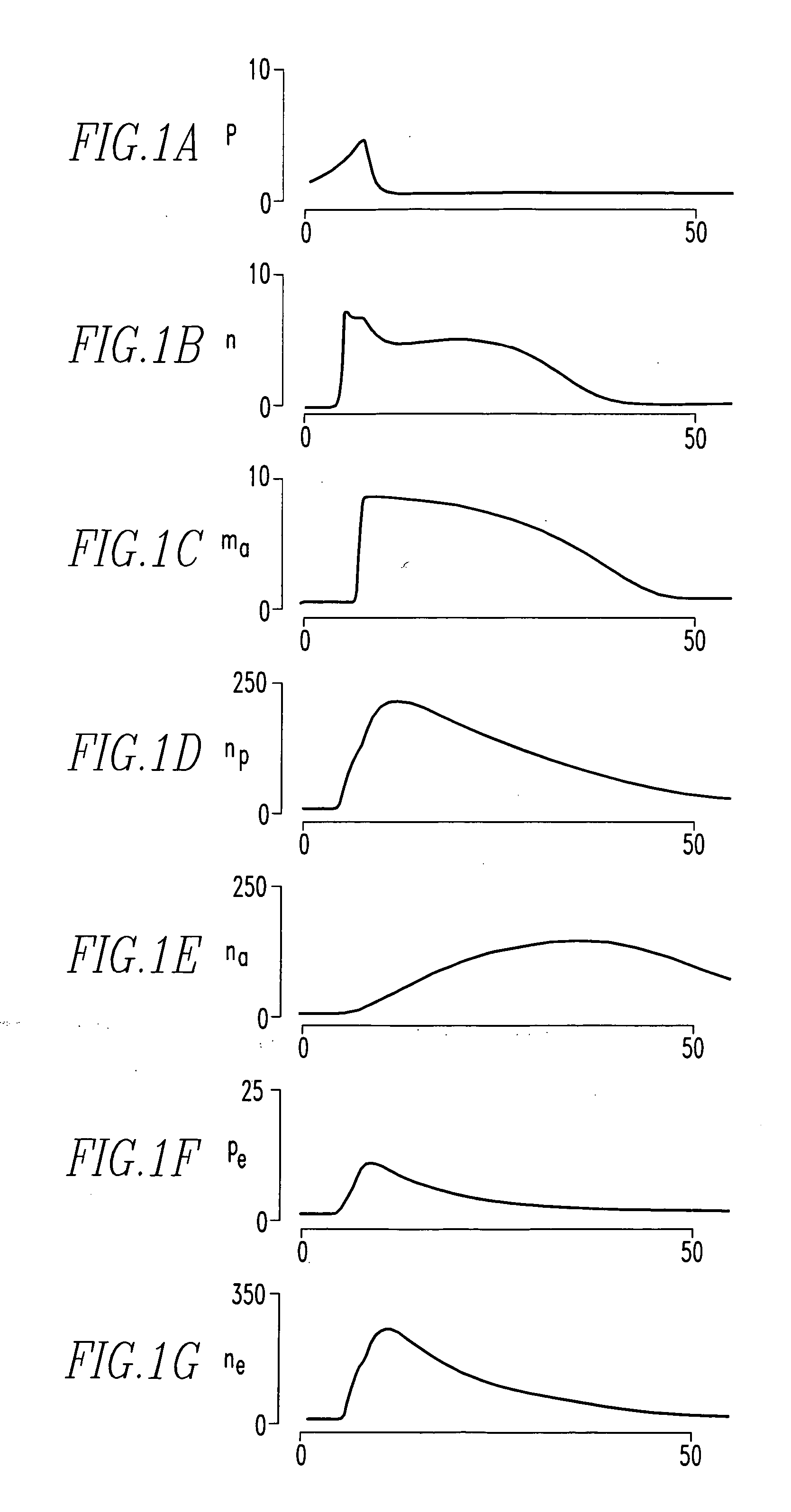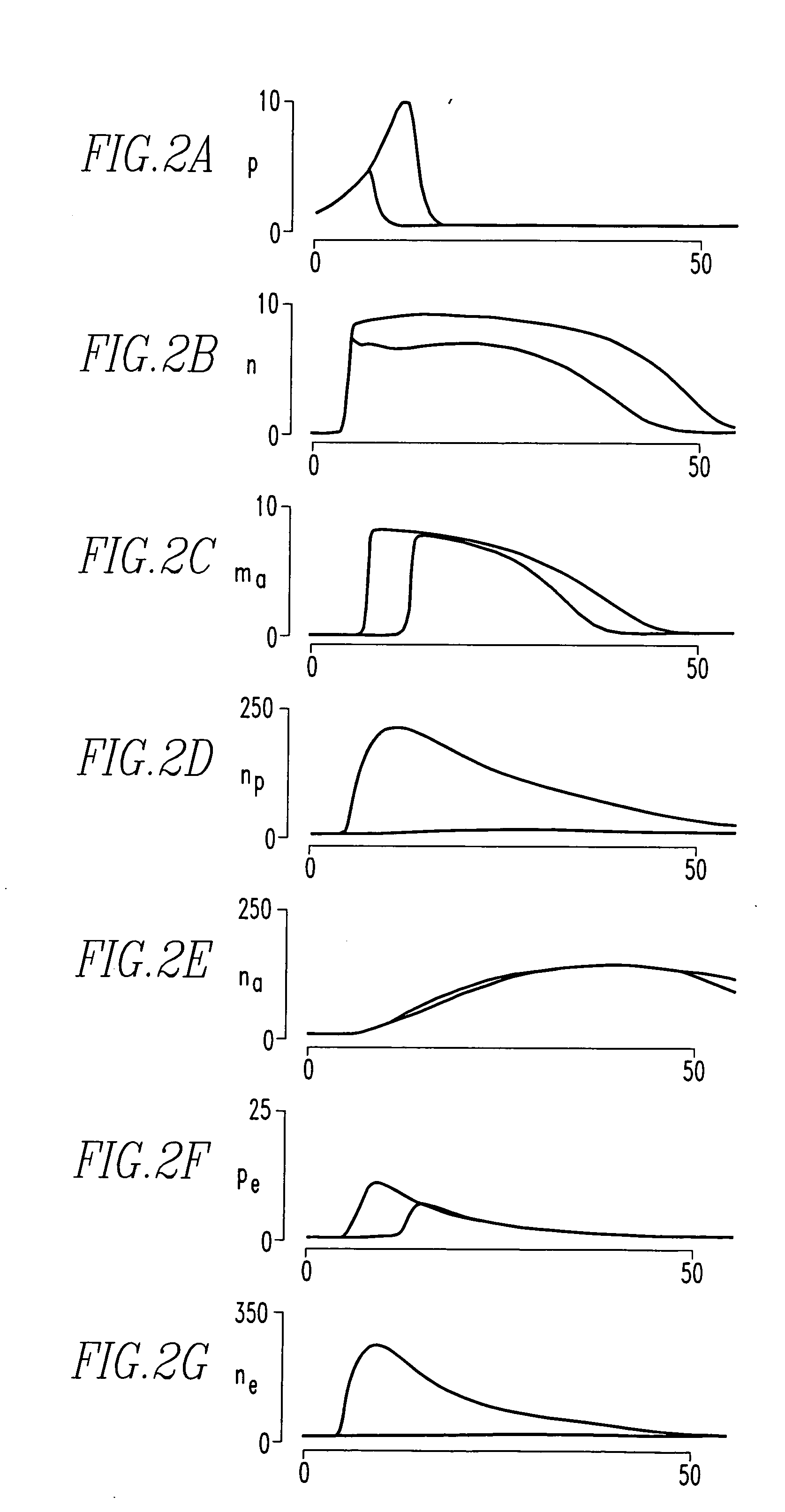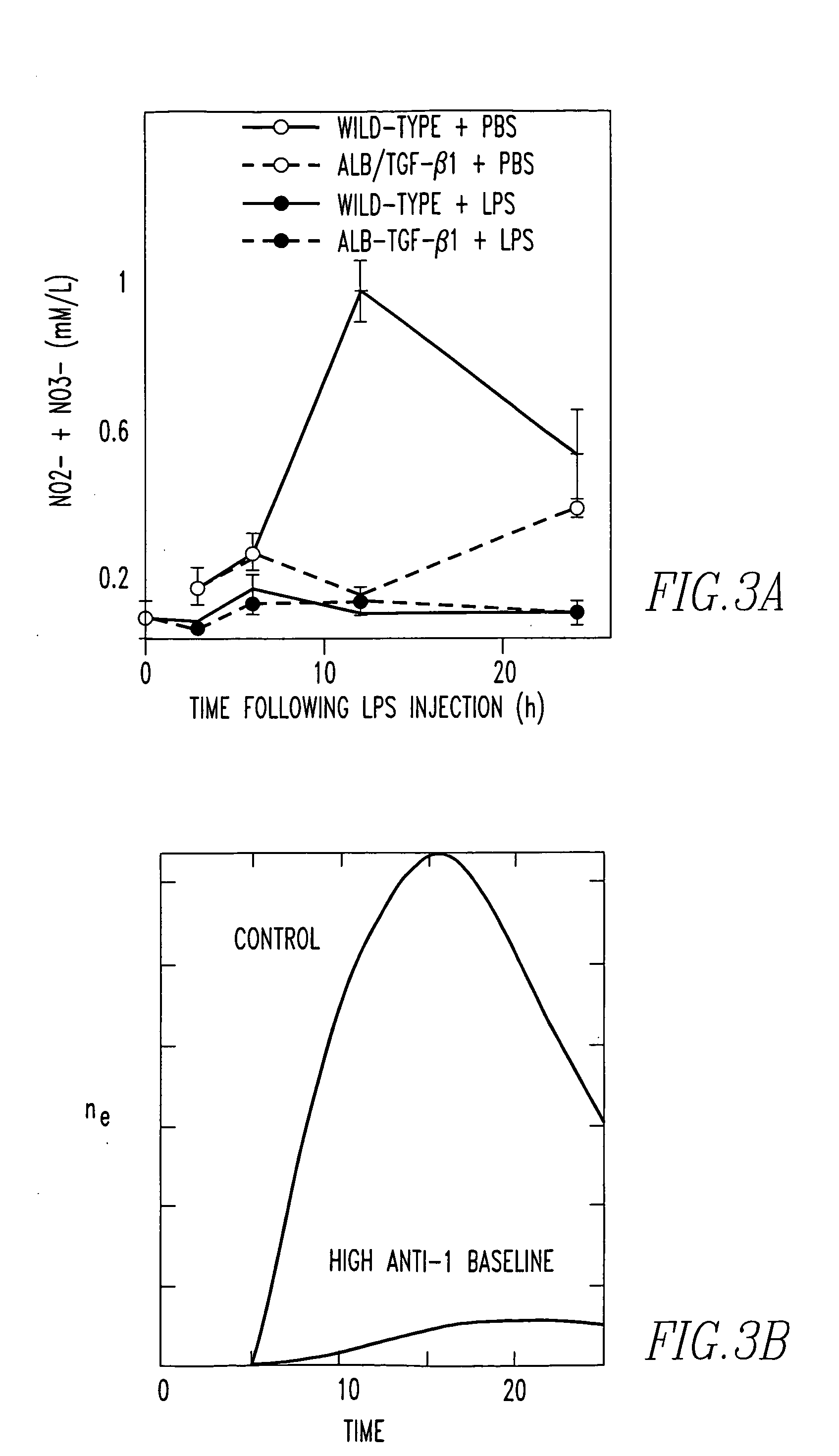Two-part drug discovery system
a drug discovery and differential equation technology, applied in the field of dynamical system of differential equations, can solve the problems of affecting the homeostatic balance, affecting the stability of the homeostatic balance, and the macroscopic organ system. , to achieve the effect of high prediction, high prediction, and simulating acute inflammation
- Summary
- Abstract
- Description
- Claims
- Application Information
AI Technical Summary
Benefits of technology
Problems solved by technology
Method used
Image
Examples
Embodiment Construction
[0031] As described above, the present invention is a mathematical model in which changes in a number of physiologically significant factors are measured and interpolated to determine a “damage function” incident to bacterial infection or other serious inflammation. By measuring a large number of physiologically significant factors including, but not limited to, Interleukin 6 (IL-6), Interleukin 10 (IL-10), Nitric Oxide (NO), and others, it is possible to predict life versus death by the damage function, dD / dt, which measures and interpolates differential data for a plurality of factors. Certain ratios of these physiologically significant factors, measured at given points in time, are representative of the damage function without embodying the damage function in its entirety, but the ratios are useful nonetheless. For example, in mammals an IL-6 / NO ratio <8 at 12 hours post infection is highly predictive (60%) of mortality; also in mammals an IL-6 / NO ratio <4 at 24 hours post infect...
PUM
| Property | Measurement | Unit |
|---|---|---|
| time | aaaaa | aaaaa |
| blood pressure | aaaaa | aaaaa |
| adhesiveness | aaaaa | aaaaa |
Abstract
Description
Claims
Application Information
 Login to View More
Login to View More - R&D
- Intellectual Property
- Life Sciences
- Materials
- Tech Scout
- Unparalleled Data Quality
- Higher Quality Content
- 60% Fewer Hallucinations
Browse by: Latest US Patents, China's latest patents, Technical Efficacy Thesaurus, Application Domain, Technology Topic, Popular Technical Reports.
© 2025 PatSnap. All rights reserved.Legal|Privacy policy|Modern Slavery Act Transparency Statement|Sitemap|About US| Contact US: help@patsnap.com



